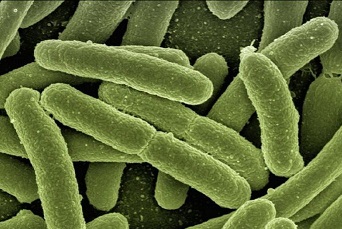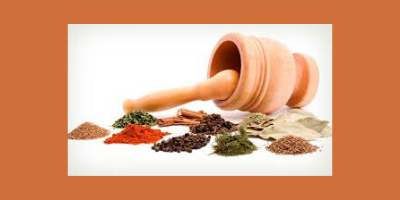Eczema is a general term encompassing various inflamed skin conditions. One of the most common forms of eczema is atopic dermatitis (or "atopic eczema"). Approximately 10 percent to 20 percent of the world population is affected by this chronic, relapsing, and very itchy rash at some point during childhood. Fortunately, many children with eczema find that the disease clears and often disappears with age.
In general, atopic dermatitis will come and go, often based on external factors. Although its cause is unknown, the condition appears to be an abnormal response of the body’s immune system. In people with eczema, the inflammatory response to irritating substances overacts, causing itching and scratching. Eczema is not contagious and, like many diseases, currently cannot be cured. However, for most patients the condition may be managed well with treatment and avoidance of triggers.
What does eczema look and feel like?
Although eczema may look different from person to person, it is most often characterized by dry, red, extremely itchy patches on the skin. Eczema is sometimes referred to as "the itch that rashes," since the itch, when scratched, results in the appearance of the rash.
Eczema can occur on just about any part of the body; however, in infants, eczema typically occurs on the forehead, cheeks, forearms, legs, scalp, and neck. In children and adults, eczema typically occurs on the face, neck, and the insides of the elbows, knees, and ankles. In some people, eczema may "bubble up" and ooze. In others, the condition may appear more scaly, dry, and red. Chronic scratching causes the skin to take on a leathery texture because the skin thickens (lichenification).
What makes patients with eczema itch?
Many substances have been identified as itch "triggers" in patients with eczema, and triggers are not the same for every person. Many times it is difficult to identify the exact trigger that causes a flare-up. For some, it seems that rough or coarse materials coming into contact with the skin causes itchiness. For others, feeling too hot and/or sweating will cause an outbreak. Other people find that certain soaps, detergents, disinfectants, contact with juices from fresh fruits and meats, dust mites, and animal saliva and danders may trigger itching. Upper respiratory infections (caused by viruses) may also be triggers. Stress can also sometimes aggravate an existing flare-up.
Who gets eczema?
Eczema occurs in both children and adults, but usually appears during infancy. Although there is no known cause for the disease, it often affects people with a family history of allergies.
Those who are genetically predisposed and then exposed to environmental triggers may develop eczema. Many people who have eczema also suffer from allergic rhinitis and asthma, or have family members who do.
How common is eczema?
The National Institutes of Health estimates that 15 million people in the United States have some form of eczema. About 10 percent to 20 percent of all infants have eczema; however, in nearly half of these children, the disease will improve greatly by the time they are between five and 15 years of age. Others will have some form of the disease throughout their lives.
How can eczema be prevented?
Eczema outbreaks can usually be avoided with some simple precautions. The following suggestions may help to reduce the severity and frequency of flare-ups:
Moisturize frequently
Avoid sudden changes in temperature or humidity
Avoid sweating or overheating
Reduce stress
Avoid scratchy materials (e.g., wool or other irritants)
Avoid harsh soaps, detergents, and solvents
Avoid environmental factors that trigger allergies (e.g., pollens, molds, mites, and animal dander)
Be aware of any foods that may cause an outbreak and avoid those foods
How can eczema be treated?
One of the most important components of an eczema treatment routine is to prevent scratching. Because eczema is usually dry and itchy, the most common treatment is the application of lotions or creams to keep the skin as moist as possible. These treatments are generally most effective when applied directly after bathing (within three minutes is a common recommendation) so that the moisture from the bath is "locked in." Cold compresses applied directly to itchy skin can also help relieve itching. If the condition persists, worsens, or does not improve satisfactorily, another effective treatment is the application of nonprescription corticosteroid creams and ointments to reduce inflammation.
Alternatives to nonprescription corticosteroids include more potent prescription corticosteroid creams and ointments, which are effective, but which may have some side effects. To prevent side effects such as skin thinning, your doctor may limit the length of treatment time and locations where you can apply treatment. For severe flare-ups, your doctor may prescribe oral corticosteroids, but be aware that side effects including new flare-ups can develop when treatment is discontinued (this treatment is not recommended for long-term use).
Skin affected by eczema may frequently become infected. If this happens to you, your doctor may prescribe topical or oral antibiotics to kill the bacteria causing the infection.
For severe itching, sedative antihistamines are sometimes used to reduce the itch and are available in both prescription and over-the-counter varieties. Because drowsiness is a common side effect, antihistamines are often used in the evening to help a person restless from eczema get to sleep. Because of the same sedative effect, though, persons taking these agents should not drive. Tar treatments and phototherapy are also used and can have positive effects; however, tar can be messy. Phototherapy requires special equipment (lights). Finally, in cases where eczema is resistant to therapy, your physician may prescribe the drug cyclosporine A, which modifies immune response; however, this is used only in extreme cases because of its association with serious side effects.
Two topical medications, tacrolimus and pimecrolimus, have been approval by the U.S. Food and Drug Administration (FDA) to treat atopic dermatitis. These medications belong to a class of drugs called calcineurin inhibitors and work by modulating the immune response. Pimecrolimus and tacrolimus are a much-welcomed addition because they have not produced some of the side effects associated with long-term topical corticosteroid use, such as thinning skin and loss of effectiveness.
What can be done for children with eczema?
Children are unique patients because it may be difficult for them to resist scratching their eczema, thereby making the condition worse. Fortunately, for mild to moderate cases, the application of moisturizer on a regular basis can be very helpful. And, in most cases, the eczema will disappear as the child ages. In the meantime, avoid as many eczema triggers as possible. Keep your child’s skin moist. After bathing, apply moisturizer within three minutes to retain the moisture in the skin. Avoid sudden temperature changes. Keep your child’s bedroom and play areas free of dust mites (a common trigger). Use mild soaps – both on your child’s skin and on your child’s clothing. Dress your child in breathable, preferably cotton, clothing.
If these methods fail to help your child, you should seek further advice from a dermatologist. After consultation, an over-the-counter cream, a prescription cream, ointment, antihistamines, or antibiotics may be advised. Regardless, most children will see improvement as time goes by.
—
Ammarah
Radio Islam
+27118547022
ammarah@radioislam.co.za
www.radioislam.co.za





0 Comments